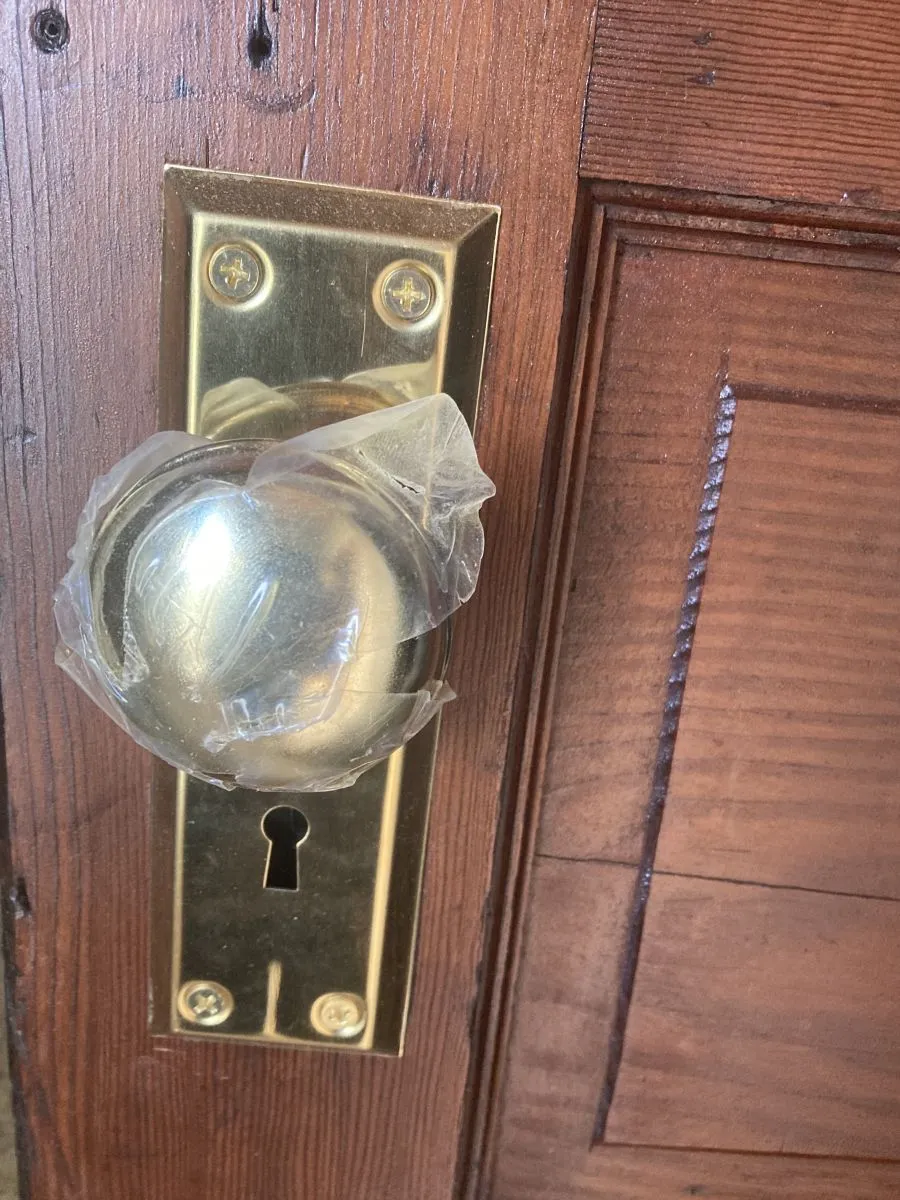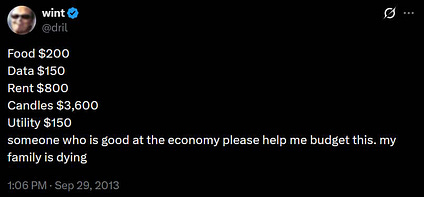Donations needed for third house being renovated in Waterville for low-income families – The Maine Monitor

Project Report: The Milliken Neighborhood Restoration Initiative and its Alignment with Sustainable Development Goals
This report details the urban renewal efforts in Waterville, Maine, led by the Waterville Community Land Trust (WCLT). The initiative focuses on the restoration of historic homes in the Milliken Neighborhood, directly contributing to several United Nations Sustainable Development Goals (SDGs), particularly SDG 11 (Sustainable Cities and Communities).
Historical Context and Project Inception
The Milliken Neighborhood, historically known as the South End, was developed in the late 1800s to house workers for local mills. Over time, many of these properties fell into disrepair. The WCLT, in partnership with the city of Waterville and other community organizations, launched the Milliken Project to revitalize the area by restoring these homes. This effort seeks to preserve the neighborhood’s cultural heritage while addressing contemporary housing needs, a core component of SDG 11.4 (protect and safeguard cultural heritage).
Operational Framework and Contribution to SDG 11 (Sustainable Cities and Communities)
The WCLT’s operational model is designed to create lasting, affordable housing solutions, directly addressing SDG 11.1, which aims to ensure access for all to adequate, safe, and affordable housing.
The Community Land Trust Model
The WCLT’s strategy is centered on separating the ownership of the building from the ownership of the land.
- Acquisition and Renovation: The trust acquires and renovates dilapidated properties.
- Affordable Sale: The renovated home is sold to a qualifying family at approximately 20% below market rate. Eligibility is limited to families earning at or below 80% of the area’s median income.
- Land Ownership: The WCLT retains ownership of the land, which the homeowner leases through a 99-year agreement with a nominal monthly fee.
- Shared Equity: Upon resale, the homeowner retains 25% of the property’s appreciation, while the remaining 75% is reinvested by the WCLT into future affordable housing projects, ensuring the long-term sustainability of the initiative.
This model not only makes initial homeownership accessible but also preserves the affordability of the housing stock for future generations, creating a sustainable cycle of community development.
Case Study: Restoration of 3 Carrean Street
The current focus of the Milliken Project is the “LaTulippe” house, a Victorian-era home at 3 Carrean Street. The restoration is a practical application of sustainable community principles.
- Heritage Preservation (SDG 11.4): Significant effort is being made to restore historical features such as coffered ceilings, stained glass windows, and period woodwork. This preserves the cultural and architectural identity of the neighborhood.
- Modernization and Sustainability: While preserving historic character, the home is being converted into two modern condominium units with updated amenities. The project seeks funding for energy-efficient heat pumps, which would align with SDG 7 (Affordable and Clean Energy) by reducing long-term energy costs for residents.
- Community Engagement: The project relies heavily on volunteer labor, with key volunteers contributing thousands of hours. This participatory approach strengthens community bonds and fosters a sense of collective ownership over the neighborhood’s revitalization.
Addressing Broader Sustainable Development Goals
Beyond urban renewal, the Milliken Project makes significant contributions to other key SDGs.
SDG 1 (No Poverty) and SDG 10 (Reduced Inequalities)
By creating a pathway to homeownership, the project directly addresses poverty and inequality. The model enables low-income families, including many single-parent households, to build equity and generational wealth. The goal is to ensure that mortgage, tax, and insurance costs are lower than typical rental expenses, providing financial stability and reducing economic disparity within the community. The project aims to increase the rate of homeownership, thereby reducing the high renter-to-owner ratio (currently estimated at 52-53%) in Waterville.
SDG 17 (Partnerships for the Goals)
The success of the Milliken Project is a testament to the power of multi-stakeholder partnerships. Key collaborators include:
- The City of Waterville (a recipient of a CommunityWINS Challenge grant)
- Habitat for Humanity
- The South End Neighborhood Association
- The Quality of Life Committee
This collaborative framework demonstrates an effective model for achieving sustainable development through the combined efforts of non-profits, municipal government, and local community groups.
Conclusion and Future Outlook
The Waterville Community Land Trust’s Milliken Project serves as an exemplary model for sustainable urban revitalization. By integrating historic preservation with the creation of affordable housing, the initiative makes tangible contributions to SDG 1 (No Poverty), SDG 10 (Reduced Inequalities), and, most significantly, SDG 11 (Sustainable Cities and Communities). Through its innovative land trust model and strong community partnerships, the WCLT is not only renovating houses but is also fostering a more stable, equitable, and resilient community for the future.
Analysis of Sustainable Development Goals
1. Which SDGs are addressed or connected to the issues highlighted in the article?
- SDG 1: No Poverty – The article addresses poverty by describing a project that helps low-income families build wealth and financial stability through affordable homeownership. The Waterville Community Land Trust (WCLT) model is designed to make sure owners pay less in mortgage and other expenses compared to rent, directly contributing to their economic well-being.
- SDG 10: Reduced Inequalities – The initiative focuses on providing housing opportunities specifically for families at 80% of the area’s median income and single-parent families with financial constraints. By creating a pathway to homeownership for economically disadvantaged groups, the project works to reduce economic inequality within the community.
- SDG 11: Sustainable Cities and Communities – This is the most prominent SDG in the article. The project directly contributes to making the city of Waterville more inclusive and sustainable by renovating dilapidated housing, increasing the stock of affordable homes, revitalizing a historic neighborhood (the Milliken Neighborhood), and preserving cultural heritage by restoring Victorian-era houses.
- SDG 17: Partnerships for the Goals – The article highlights a multi-stakeholder partnership essential for the project’s success. It explicitly mentions the collaboration between the WCLT (a civil society organization), the city of Waterville (public sector), and other partners like Habitat for Humanity and the South End Neighborhood Association, demonstrating a commitment to collaborative action.
2. What specific targets under those SDGs can be identified based on the article’s content?
- Target 1.4: By 2030, ensure that all men and women, in particular the poor and the vulnerable, have equal rights to economic resources, as well as access to basic services, ownership and control over land and other forms of property. The WCLT’s model, where it sells the house but retains land ownership through a 99-year lease, directly provides low-income families with control over a form of property and an opportunity to “build equity.”
- Target 10.2: By 2030, empower and promote the social and economic inclusion of all. The project promotes economic inclusion by making homeownership accessible to families who are “getting priced out” of the market, including those with financial constraints, thereby giving them a stake in the community and a chance to build wealth.
- Target 11.1: By 2030, ensure access for all to adequate, safe and affordable housing and basic services. The core mission of the Milliken Project is to restore homes and sell them as affordable housing to low-income families, directly addressing the need for adequate and affordable housing in Waterville.
- Target 11.4: Strengthen efforts to protect and safeguard the world’s cultural and natural heritage. The article details the careful restoration of a “solidly built Victorian with detailed coffered ceilings, stained glass windows and period woodwork,” which is a clear effort to protect and safeguard the local architectural and cultural heritage of the neighborhood.
- Target 17.17: Encourage and promote effective public, public-private and civil society partnerships. The project is an example of this target in action, funded in part by a city grant and executed through a partnership between the WCLT, the city of Waterville, Habitat for Humanity, and community associations.
3. Are there any indicators mentioned or implied in the article that can be used to measure progress towards the identified targets?
- Proportion of population with secure tenure rights (related to Target 1.4): The article implies this through its goal of converting renters into homeowners. The statistic that “52% to 53% of Waterville residents are renters” serves as a baseline indicator, and the number of families who purchase homes through the WCLT program is a direct measure of progress.
- Number of affordable housing units created (related to Target 11.1): The article explicitly mentions three houses being restored by the trust, with the latest at 3 Carrean St. being converted into two condominiums. The number of housing units made available to low-income families is a clear quantitative indicator.
- Affordability metrics (related to Target 11.1): The article provides specific indicators of affordability, stating that homes are sold “at 20% below market rate” and that the goal is for owners to “pay less in mortgage, tax and insurance expenses — compared to the cost of renting an apartment.”
- Number of historic buildings preserved (related to Target 11.4): The restoration of the “LaTulippe” house and the other homes in the historic Milliken Neighborhood can be counted as an indicator of progress in safeguarding cultural heritage.
- Value of financial and non-financial contributions (related to Target 17.17): The article mentions a “$50,000 award” from the city’s CommunityWINS Challenge grant. Additionally, the “thousands of hours” contributed by volunteers is a non-financial indicator of the strength of the civil society partnership.
Summary of Findings
4. Create a table with three columns titled ‘SDGs, Targets and Indicators” to present the findings from analyzing the article.
| SDGs | Targets | Indicators |
|---|---|---|
| SDG 1: No Poverty | 1.4: Equal rights to ownership and control over land and property for the poor and vulnerable. |
|
| SDG 10: Reduced Inequalities | 10.2: Empower and promote the social and economic inclusion of all. |
|
| SDG 11: Sustainable Cities and Communities | 11.1: Access for all to adequate, safe and affordable housing. |
|
| 11.4: Protect and safeguard the world’s cultural heritage. |
|
|
| SDG 17: Partnerships for the Goals | 17.17: Encourage and promote effective public, public-private and civil society partnerships. |
|
Source: themainemonitor.org
What is Your Reaction?
 Like
0
Like
0
 Dislike
0
Dislike
0
 Love
0
Love
0
 Funny
0
Funny
0
 Angry
0
Angry
0
 Sad
0
Sad
0
 Wow
0
Wow
0




















































.jpg.webp?itok=0ZsAnae9#)


























